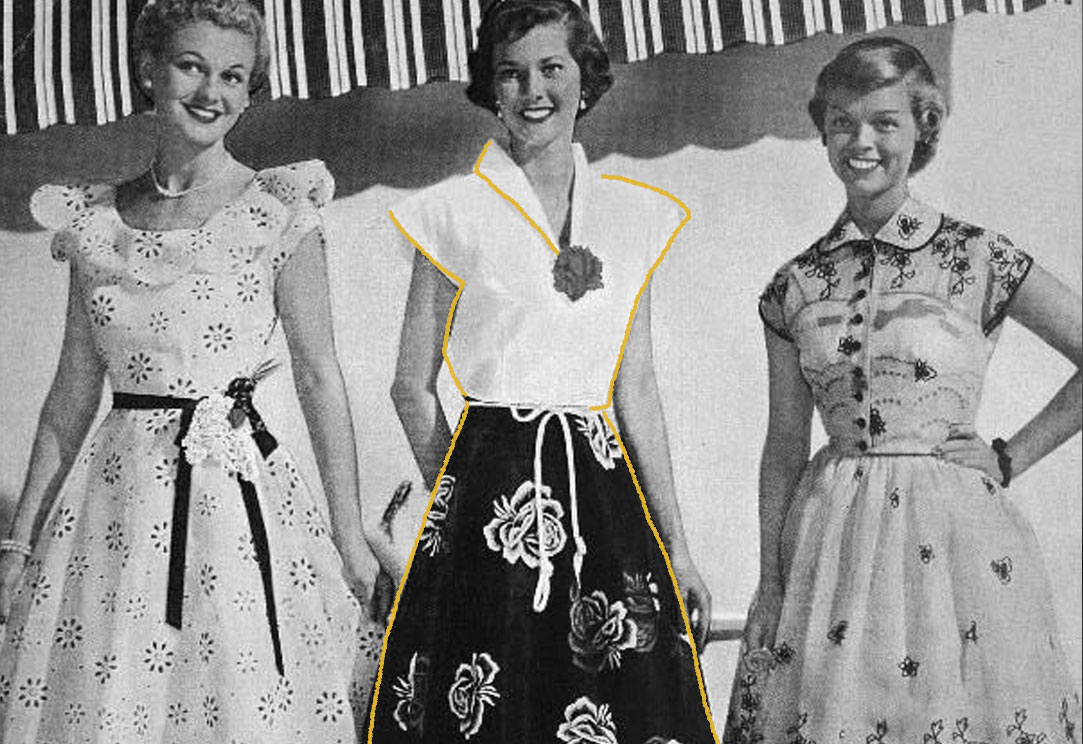Tea dresses were a mainstay of the 1930s and featured a natural waistline (in contrast to the drop-waist flapper dresses of the previous decade). Tea dresses were often bias-cut with modest necklines and flowing skirts that ended between the knee and calf. These midi-length dresses were so named because they were often worn to tea or other mid-afternoon or early evening events. Wallace Simpson, Greta Garbo, and Marlene Dietrich all famously wore tea dresses in the 1930s. The style was also very prevalent in the 1940s. Floral patterns, polka dots, and pastels were common, as were sweetheart necklines and slightly shorter hemlines. Rita Hayworth, Lauren Bacall, and Esther Williams all famously wore tea dresses in the 1940s. In the 1990s, the grunge scene revived the 1940s tea dress with stars like Gwen Stefani, Courtney Love, Pearl Lowe, Kate Moss, Drew Barrymore, and Winona Ryder at the helm of the trend. Today, the style is considered a classic that can be made to work for many different fashion aesthetics, from ultra-feminine to hipster to grunge.

Your go-to guide for weird history facts
Subscribe to the FREE daily email that makes learning about history fun.


